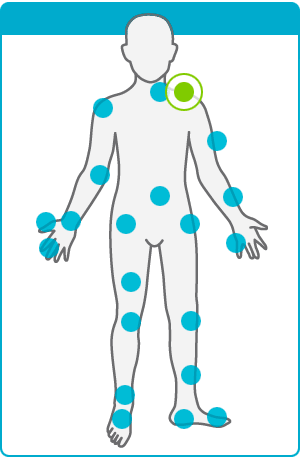[one_half last=”no”]
 |
[/one_half]
Clavicle fracture (Collar Bone fracture)
Clavicle fractures are common in children, adolescents and young adults. These occur as a result of a fall directly onto the shoulder, a direct blow to the shoulder or a fall on to an outstretched arm. The majority of fractures occur at the centre of the bone and less so either at the outer part-near the shoulder or the inner part-near the sternum (breast bone).
Symptoms include poor movement of the arm due to pain, sagging of the shoulder and bruising, swelling and a bump over the fracture site. While the fracture rarely punctures the skin, often the bone will press against the skin, ‘tenting’ the skin.
Your doctor needs to examine this injury and an xray will pin point the site of the fracture. Non-operative treatment is indicated for most clavicle fractures.
- There are numerous slings available for this injury. No one device suits every patient. As long as the sling is comfortable, supportive and it keeps the arm in position while the clavicle heals then it is adequate. Wear the sling under your clothes initially. Usually after about one week, you can wear this outside your clothes, but this advice may vary depending on the fracture and the treatment path chosen by your doctor.
- Medication is often required initially for Pain Control but this is less likely with time.
- While the arm is immobilised, an initial loss of strength is encountered. As the pain settles, your doctor or physiotherapist will guide you through Rehabilitation Exercises.
- Sometimes surgery is indicated, particularly if the fracture is severe or poor healing potential is anticipated. Paediatric clavicle fractures (in children) almost never require surgery.
